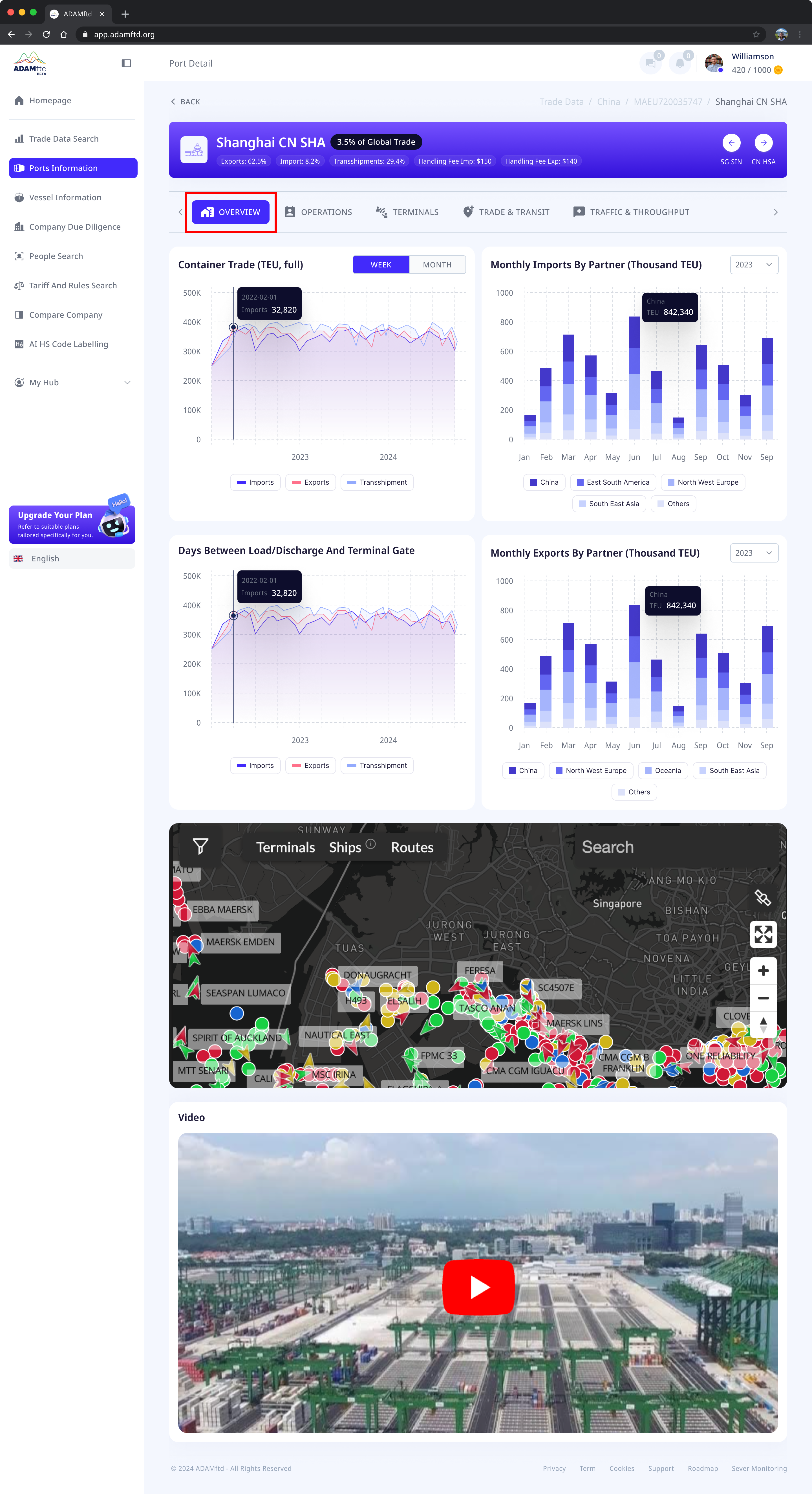This feature offers a detailed breakdown of container trade, import/export data, terminal operations, and vessel traffic, empowering users to optimize their supply chain strategies.

1. Port Overview
The overview provides a summary of the port’s performance, including:
- Share of global trade: Indicates the port’s significance in global shipping.
- Exports, imports, and transshipment percentages.
- Handling fees for imports and exports.
Importance
- Offers a quick snapshot of the port’s activity and its role in the global supply chain.
- Helps users assess the port’s efficiency and relevance to their trade routes.
2. Container Trade Analysis
Graphs showing container trade in TEU (Twenty-Foot Equivalent Units) over time:
- Imports, exports, and transshipments on a weekly or monthly basis.
- Trends in container volumes to analyze traffic patterns.
Importance
- Enables businesses to monitor trade volumes and identify peak activity periods.
- Helps users plan shipments more effectively by understanding port capacity and trends.
3. Import and Export by Partner Regions
Bar charts illustrating:
- Monthly imports and exports by partner regions (e.g., China, North West Europe, South East Asia).
- Trade flow breakdowns by volume (in thousand TEUs).
Importance
- Provides insights into the port’s major trading partners.
- Helps businesses identify key regional trade hubs and optimize their logistics.
4. Load/Discharge and Terminal Gate Operations
- Data showing the time taken for containers to move between loading/discharge and terminal gates.
Importance
- Highlights the port’s operational efficiency.
- Enables users to assess delays that could impact shipment timelines.
5. Interactive Port Map
A live map displaying:
- Terminals, vessels, and shipping routes around the port.
- Real-time vessel traffic and terminal activity.
Importance
- Offers a visual representation of current port operations.
- Helps users track vessel movements and understand port congestion.
6. Multimedia Insights
- Embedded videos showcasing port operation highlights and infrastructure.
Importance
- Provides a contextual understanding of the port’s facilities and capabilities.
- Helps users evaluate the port’s readiness to handle specific cargo types or volumes.